After a while out in the cold, veils are back in vogue. Birdcage veils dominated the aisles over the last couple of years, while Lily Allen and Princess Beatrice both rocked long veils last year. So what are your choices if you're thinking of donning a veil? The options are as varied as wedding dress styles - there are short veils, long veils, birdcage veils, cathedral-length showstoppers and half a dozen more. So we thought it would be useful to create a guide to the different types of wedding veils, outlining the main styles and options, and providing a few top tips for choosing the right one!

Birdcage Veil
Birdcage veils are also commonly known as cage veils, face veils, cage blushers, and pouf veils. Shortest of all veils, they may be worn on the front of the face, or they may cover the entire head. As far as the length goes, the netting may come down to cover one or both eyes, down to the nose or chin, or even cover the entire face, depending on what you feel most comfortable with.

Blusher Veil
This is another short style of veil, with the veil material falling to the lip line. Many veil lengths incorporate a blusher which can cover the face and then be pushed back to sit on top of the head after the ceremony. Blusher veils can be worn alone with informal dresses or paired with hats for a modern look. If you want to have a go at making your own, Martha Stewart has a handy DIY over on Martha Stewart Weddings.
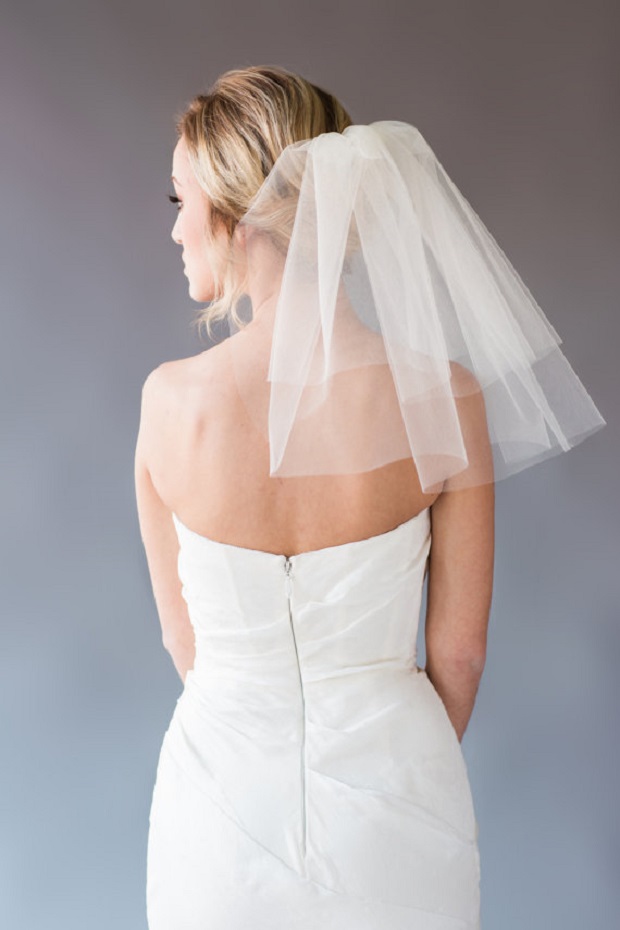
Flyaway Veil
A short, floaty style with multiple layers of tulle that just sweep the shoulders, the flyaway veil creates a cute, retro look, very reminiscent of the '60s. This one is perfect for brides who love vintage style.
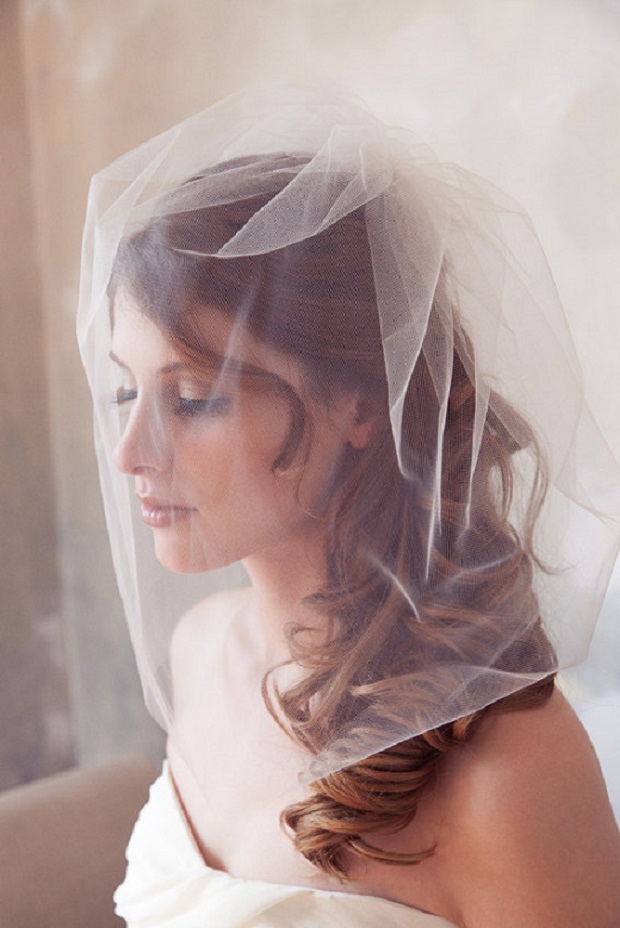
Shoulder-Length Veil
This one is a very simple veil that sits on the shoulders and can be made to look fuller with a blusher. The shoulder-length veil makes for a fairly informal look, again slightly '60s style. It's often referred to as the Madonna veil, because it resembles a shroud around the face, but the amount of tulle can range in length from 18" to 27", so just about reaching the shoulder or passing the shoulders.

Elbow-Length Veil
Slightly longer than the shoulder-length Madonna veil, an elbow-length veil can be a good choice for shorter brides as it spans to the elbow and won't swamp you in fabric. This one can be informal or formal and can also include a blusher, but often an elbow-length veil is made of plain tulle with a lace, embroidered or contrast edging, as in the above example.
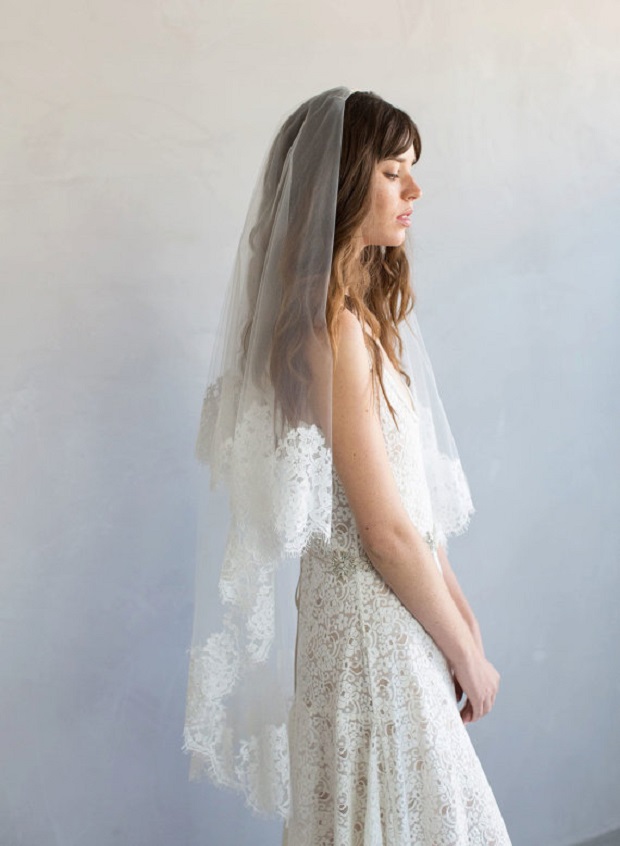
Fingertip Veil
Taller brides can carry off this style, which looks very elegant and veers towards more formal styles. The veil just reaches the end of your outstretched fingertips and floats around you almost like a cape. This veil was hugely popular during the late 1940s and early 1950s. Fingertip veils are often more embellished, so if choosing one, make sure to consider the style of your wedding dress.

Juliet Cap Veil
A Juliet Cap is a small open-work crocheted or mesh cap, often decorated with pearls, beads or jewels. The cap can be worn alone or as part of a longer veil, and is perfect if you're looking to ooze 1920s, Gatsby-esque glam.
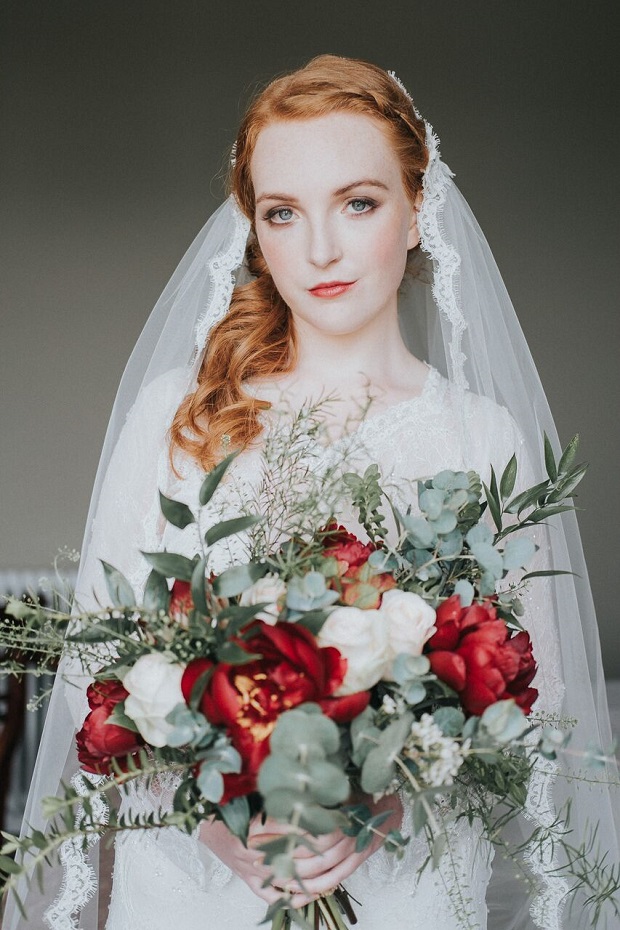
Mantilla
This Spanish-style Mantilla veil is often made of lace and usually trimmed with lace and embroidery. It drapes over the head to varying lengths from elbow to waltz, and is oh-so-romantic!

Ballet Veil
Also known as the waltz or walking veil, the ballet veil doesn't quite hit the floor, allowing you to dance without tripping yourself up! Typically, the tulle ends somewhere between the knee and the ankle.
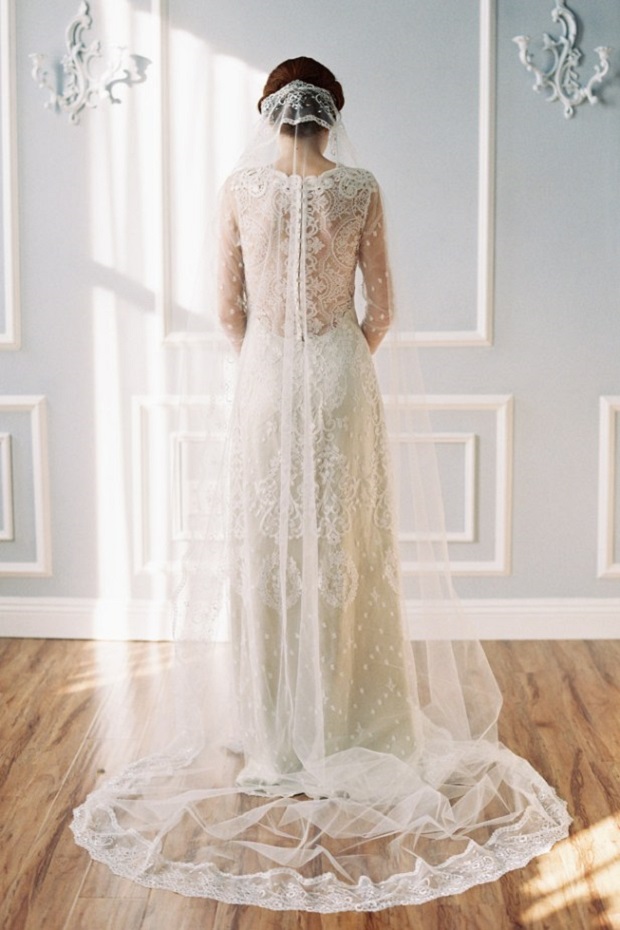
Cathedral Veil
The most formal of all veils, cathedral veils are designed to be worn with a full gown with a cathedral-length train and to extend well past the end. This veil can reach up to around 144 inches long and is typically worn in a formal church setting for a dramatic walk down a long aisle. If you opt for this style, make sure the rest of your gown is strong enough to support it!

Our Top Tips for Choosing your Bridal Veil
- Decide whether or not you want your veil to be a statement piece or a finishing touch that doesn't compete with the dress. A heavily embroidered veil looks best paired with a simple, unembellished dress, and vice versa.
- Consider your day - are you having a relaxed, festival-style wedding or a glamorous, formal affair? This will give you an idea of which style of veil to go for.
- Ask yourself, how long do you plan on wearing the veil, as this can also dictate how long it should be. If you're planning on wearing it for the ceremony only, go ahead and get a head-turner like Princess Diana’s, but if you plan to wear your veil until the party’s over, you will need a more functional piece.
- Make sure to pick a hair style that will both accentuate and support the veil, and don't forget to bring it to your hair trial!
Still putting the finishing touches on your look? Head to the accessories section of our Supplier Directory.




